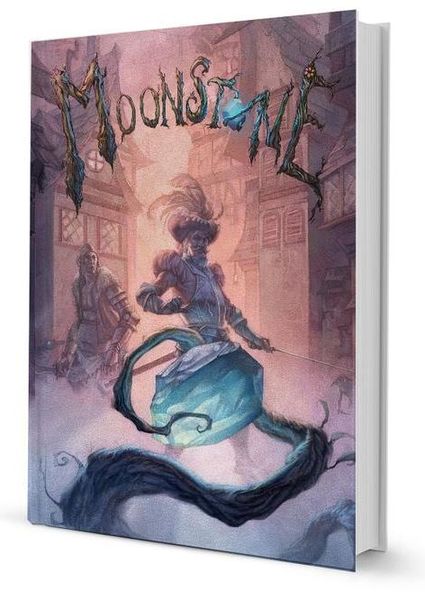Moonstone Board Game
Moonstone is a fantasy bluffing and card game designed by Shane Cook, Micah Epstein, and Thomas Lishman. It was published by Goblin King Games and is suitable for 2-4 players aged 14 and above. The game features unique mechanics such as action points, dice rolling, line of sight, measurement movement, rock-paper-scissors, and variable player powers. With a runtime of 40-120 minutes, Moonstone offers a mix of strategy and humor in a whimsical fantasy setting.
Game Components of Moonstone Board Game
How To Setup Moonstone Board Game
To set up the game, players start by arranging a 3×3 foot playing area with mutually agreed-upon terrain, avoiding the center of the board. Next, one player drops 7 d4s from about 12-16 inches above the board to determine the locations and difficulties of the moonstones. Each die’s number represents the “depth” or the number of actions required to extract the moonstone. Players then deploy their miniatures, with each player rolling a d6 to determine who goes first. The player with the highest roll chooses whether to be the “early bird” or have initiative, placing their models within 10 inches of their respective table edges.
Gameplay Mechanics and Game Objective
Player Experience
Moonstone offers a engaging and thematic experience, especially for fans of skirmish games and fantasy settings. The game’s world, Tauber, is deeply fleshed out with lore and character profiles that add a whimsical touch. Players must strategically manage their energy and models to secure moonstones, making decisions on whether to focus on combat or objective completion. The game’s small footprint and simple rules make it accessible for younger players and non-wargamers, while its unique mechanics keep it interesting for seasoned gamers.
Pros
Cons
Personal Thoughts on Moonstone Board Game
Moonstone is an excellent choice for those who enjoy tactical skirmish games with a strong thematic focus. It is particularly suited for fans of fantasy and folklore, and its accessible rules make it a great entry point for new players. The game’s unique mechanics, such as the Arcane and Melee decks, add a delightful layer of strategy and bluffing, making it a fun and engaging experience for players of all ages. However, it may not offer enough mechanical innovation for players seeking something entirely new in the skirmish genre.
We are supported by our audience. When you purchase through links on our site, we may earn an affiliate commission, at no extra cost for you. Learn more.

